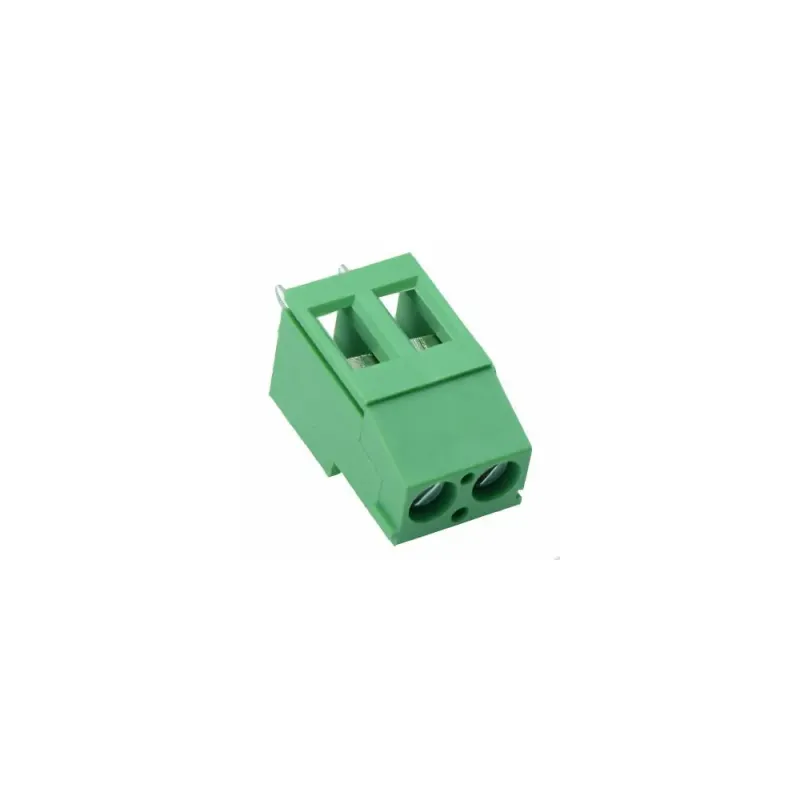
- Stock: In Stock
- Model: TBC002.TB508-2P-NO1
5.08 mm 2-Pin PCB Terminal Block (14mm Height) - Green
The PCB (Printed Circuit Board) terminal block is a type of connector that securely and dependably affixes wires to PCBs. These blocks serve as a bridge, linking external wiring to the internal circuitry of electronic devices. PCB terminal blocks are available in a plethora of designs, sizes, and configurations to cater to a variety of applications and requirements.
Key Features:
- Secure Connections: Guarantees robust and dependable connections between the PCB and external wires.
- Versatility: Comes in a variety of configurations, including different pitches, orientations, and contact types.
- Ease of Use: Crafted for simple installation and removal, facilitating easy maintenance and assembly.
- Durability: Constructed from superior materials to endure mechanical and environmental stress.
- Electrical Performance: Offers exceptional electrical conductivity with minimal resistance and reliable contact.

Common Specifications:
- Pitch: The gap between the centers of adjacent terminals, usually measured in millimeters (e.g., 2.54mm, 5.08mm).
- Current Rating: The highest current the terminal block can accommodate, measured in amperes (A).
- Voltage Rating: The maximum voltage the terminal block can tolerate, measured in volts (V).
- Wire Gauge: The spectrum of wire sizes that can be accommodated, typically specified in American Wire Gauge (AWG) or square millimeters (mm²).
- Material: Generally constructed from insulating materials like polyamide (PA), polycarbonate (PC), or phenolic resin, with contacts made from metals like brass or phosphor bronze, often coated with tin or nickel.
- Temperature Range: The operational temperature range within which the terminal block can operate reliably.
Benefits of Using PCB Terminal Blocks:
- Simplified Wiring: Facilitates easier wire connection and disconnection, reducing assembly time and errors.
- Improved Safety: Ensures secure and insulated connections, minimizing the possibility of short circuits and electrical failures.
- Flexibility: Various types and configurations to cater to different applications and design requirements.
- Maintenance: Allows for easy troubleshooting, repair, and replacement of components without desoldering.
- Space Efficiency: Designed to take up minimal PCB space while providing reliable connections.
Applications:
- Industrial Control Systems: Utilized in PLCs, motor controllers, and other industrial automation equipment.
- Consumer Electronics: Frequently found in household appliances, audio equipment, and lighting systems.
- Automotive: Employed in vehicle electronics for dependable connections in harsh environments.
- Telecommunications: Used in networking equipment and communication devices.
- Renewable Energy: Implemented in solar inverters, wind turbines, and other renewable energy systems.
Conclusion:
PCB terminal blocks are crucial components for securely and reliably connecting external wires to PCBs. Their versatility, user-friendliness, and robust performance make them suitable for a wide array of applications across various industries. Whether for industrial automation, consumer electronics, automotive systems, or renewable energy, PCB terminal blocks offer a dependable and efficient solution for wiring connections.









